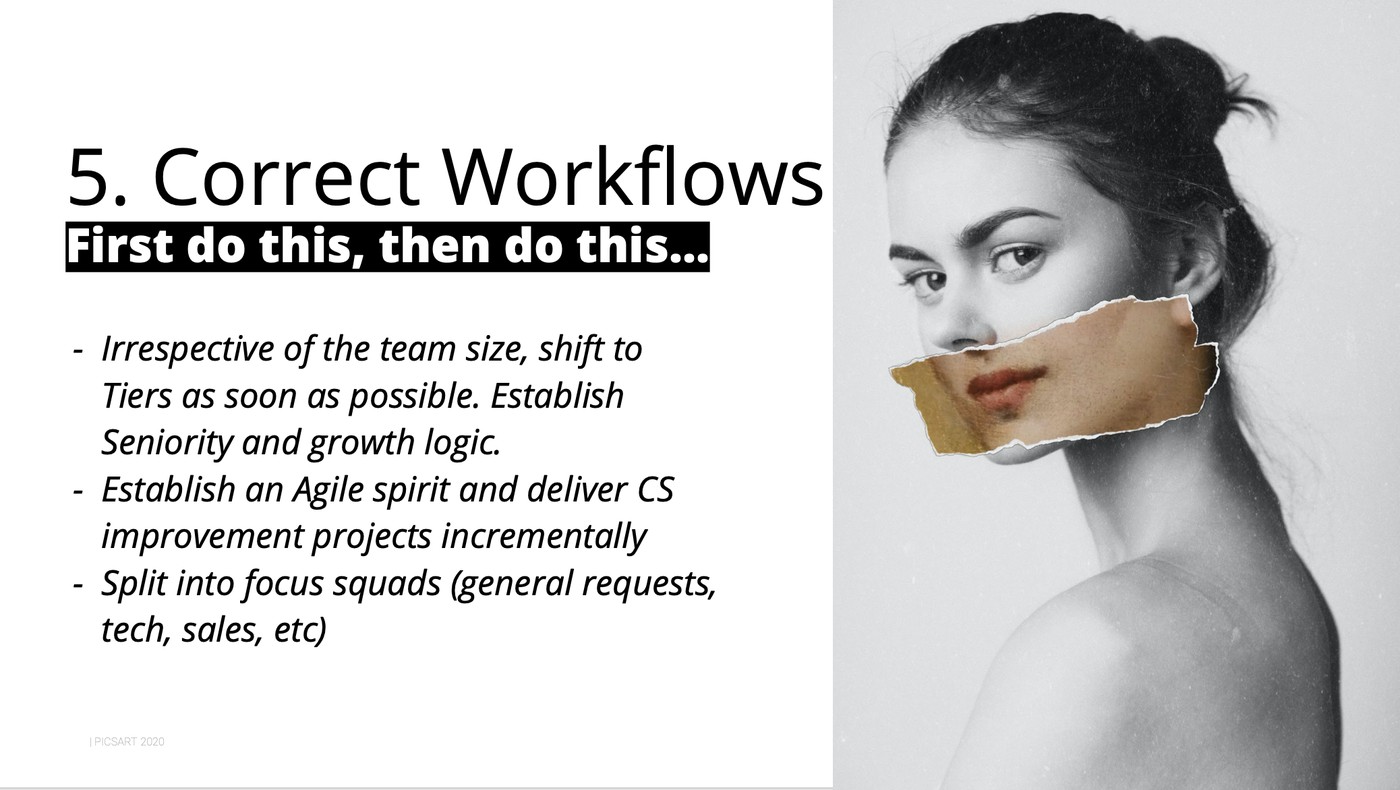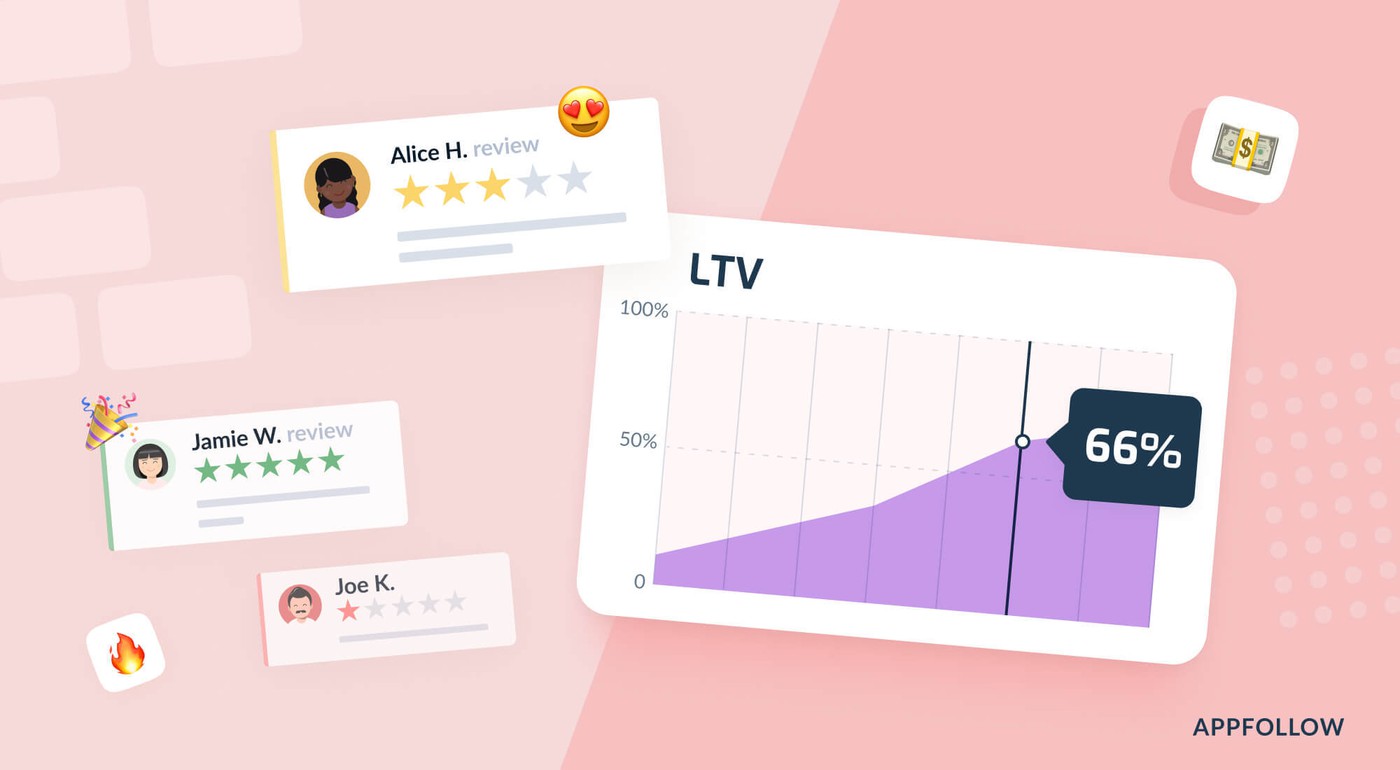How does PicsArt increase their customer support efficiency with AppFollow and Zendesk

Table of Content:
- How is PicsArt’s customer support team organized?
- What is the most important quality of a support team member?
- How do you scale your support?
- What are the key instruments to make your job more efficient?
- What is your workflow like? Describe how you sort all incoming requests?
- Got some advice for support teams?
PicsArt is the #1 creative visual storytelling platform in the world with hundreds of millions of users all over the world. It is by far one of the largest open-source content collections in the world — photos, art, stickers, and more.
We invited Vahe Kumaryan, PicsArt’s Team Lead at User Success Team, to share how they support users in 30 languages across iOS, Android, Windows apps, and a web platform keeping their CSAT at over 80%. And how AppFollow and Zendesk help them optimize and automate their work.
demo_cs_efficiency
How is PicsArt’s customer support team organized?
Just to put it in a nutshell: we have millions of users and that implies thousands of customer support requests daily. Since our product is on multiple platforms, we must be always ready to help our users in any available language, on every available platform. Because of this worldwide reach, we provide customer support via 10 broad communication channels, and these channels have their own specialized sub-channels. Even with this huge amount of incoming requests from around the world, we — an enterprise-level company — are able to sustain an 80+ satisfaction rate and we always keep it on this level or above.
Let me share some of the achievements we have had during this year.
As you can imagine, in some months we’ll receive more tickets than other months. Perhaps we’ve launched a new feature or updated our app version and users will email us with questions. When this happens, we are able to cover surges in tickets without hiring more team members. We recently increased the quality of our support: more languages, customized automatic replies, more follow-up messages. At the same time, we have secured a much more detailed data collection for our internal view.
Of course, nothing of this is possible if you don't have a positive and dedicated team. A support team is nothing without its human-to-human factor. My own view is that there is no real customer service beyond human-to-human interaction. Software and optimization can only get you so far.
What is the most important quality of a support team member?
First of all — you have to understand your user. No matter if you're a startup, or a small team in a middle-sized company or an enterprise. You have to start with a strategic approach to your product.
For instance, we always make sure that every staff member at PicsArt has and uses the product. No matter if you are B2B or B2C, you have to use your product on a daily basis to truly understand its complexity. Only then will you have the potential to foresee the delights and frustrations your users might have.
Being a PicsArt user gives me a much deeper understanding of our product and this is what helps me in my job most of all. Every customer support team should go beyond just hearing a user's feedback to identify what can be improved in their product.

But to really scale your operations, you have to go above what is perceived from the customer's point of view. You have to fill the developer’s backlogs with suggestions, improvements, and feature requests. This is the core part of working with your user base. In order to see the change, you have to advocate it within the company. When I say advocate — I mean that you should advocate it ongoing and not stop until updates are made.
How do you scale your support?
First of all, let me address this very simple (at least for me) and clear truth: There is no help center, no chatbot, no kind of software, and no robotic flow that will stop some users from contacting support.

Your goal is not to avoid users or to find workarounds on how to handle your large workloads if you have them. Your real goal is to listen to your users. You want users to contact you. Now, let’s address the issue of scaling up.
First of all, you have to ask yourself the right questions. What do you even scale up?
Scale the quality with dynamic responses in users’ language
It's not about how many users you can support at a given time. It's more about how many users you can support better, faster, and in their native language. When it comes to the native language, you can make use of dynamic canned responses in the language of the requester.
We, for example, use five core languages — Russian, English, Spanish, Chinese, and Japanese. We provide customer support to all our users through multiple platforms with these languages, but we also cover around 30+ languages depending on the channel of communication. In the App Store reviews, which we handle through AppFollow, we provide much more customized customer support and we also support many other languages there.
AppFollow's Semantic Analysis helps us evaluate user sentiment and conduct further automation adjustment based on keywords mentioned in reviews. Sentiment data dynamics might also be a performance metric for support teams.
Of course, the language choice always depends on the channel and on your target market. If it's a B2B service, you may go for a more customized approach, and sticking to fewer languages is better. In our case, we try to do both - more languages and better quality.

Identify and decrease user frustration
Think about how to decrease the overall user frustration. If you want to scale your workload, you have to resolve the user problems and that's as simple as that. Identifying the most common reasons for user frustrations and acting on it quickly is key here. A minor bug can be forgotten or moved to developers’ backlog, and your user satisfaction will decrease. But if you see an overall picture, like how many users experience this bug, you will be able to convince your developers to prioritize this task.
Track the trends
Good customer support is as data-driven as any other area of the enterprise operations. That means tracking the trends.
Let's say you have a short service downtime every month, on one specific day - for example, the first Tuesday of every month. This may happen due to a software update done on a regular basis by one of your colleagues, and only the data will help you pinpoint why this happens and where you should go look for it.
Mind your operations
The whole customer service operations are new to company structures and have only been on the rise in recent years. My recommendation is to have specific people within customer support teams to deal with operations. When I say operations, I mean everything related to the improvements and overall help center workflows. That is: updating articles, doing software administration, etc.
There are of course DevOps teams, system administrators and their area of responsibility may overlap, but the crucial thing is to have an operations person on your team -a person who is handling the organization of the software, the workflows within teams, and how it all connects together. Just try it with one person and I guarantee, you will see results and will want to get another Customer Ops on the team.
Have correct workflows in place

You should have correct workflows irrespective of the team size. Shifting to tier-based workflow is a must, in my opinion. You should have seniority levels in your team and also growth logic. Every team member should understand where they go, what they aspire for, and what they can expect from the company.
You should have an Agile spirit within your team. That will help you deliver all your customer support improvements incrementally, the same way as your product team does it.
You should also split into focus groups based on the nature of the big parts of your incoming volumes. Let's say you can split up the team’s responsibilities to general requests, tech requests, sales, subscription-related requests, etc. It will help you a lot.
Keep a work-life balance
I couldn't avoid mentioning this in the scope of all that happens nowadays: work-life balance is key. As you all know, it has become even more evident to us during the COVID-19 lockdown. Customer support can be a very frustrating and nervous job. Some companies even keep psychologists or analysts so that they could provide a kind of psychological help to customer support people and I think this is very good to have.
Mental breakdowns are not what we want to see in our teams and the happy customer support agent will provide you with happy users at all times.
Have a technical scope

You should be able to prioritize whatever is the unique scope of your team. Let's say there are multiple teams in your company capable of addressing a part of the issue that you are handling. There are also unique areas of what is under your responsibility only.
By interacting with users, you can identify certain problems like UI inconsistencies or feature quality on certain devices that are not even available in your main market region. You should try to limit the scope to where you see most of the productivity for your team and your company.
What are the key instruments to make your job more efficient?
And now for the software assets, the main topic of this talk. By assets here I mean all the customer support software, as well as all the accompanying software — the widgets, integrations, custom API-based setups, everything related to it, and the customer support team optimization.
Number one, of course, is the help center itself. It’s a must nowadays, something you have to have in order to move forward.
What is now becoming a trusty companion to any good help center are bots — chatbots, specifically. Sometimes you need quite advanced setups, capable of linking to your customer support software, to your internal CRM, etc.

For this, you should have developers within your team. You should also set up AI-based integrations and widgets and correct routing logic based on identified request patterns.Keywords should be assigned for every ticket and routed to the correct person or group of people for everything to work in a correct and efficient way.
Cross-software data structure consistency. It’s one of the biggest challenges for us. You don't always have free hands to help you and sometimes, you’ll need to just figure it out on your own. The key is to make sure the data - be it contact data or anything else - isn’t messed up if it has to connect or run through another software you’re using.
Have an expert-level administration. You need to have specific people in your team who are experts in software administration. One support specialist in your team cannot do hundreds of jobs simultaneously — they have to either talk to the users or set up the floors through which they talk to the user. Make the customer support team member’s job as easy as possible.
The golden rule is: automation should not detach you from the user. It should increase the quality of customer support. Chasing after the automation should not bring you to a point where everything is automated and there is no one to speak to. Your main goal, as I said before, should be to listen to your users and get to know them better.
What is your workflow like? Describe how you sort all incoming requests?
I will share an example of our daily incoming support volume lifecycle.
- When support tickets come in, we have a spam detection system that filters some of them out. The rest go to our help center software, Zendesk, and that’s where the real work begins.
- Special tags are put on priority tickets. You must tag whatever is prioritized. You do not want these crucial tickets to fall under any other kind of automation or automatic reply firsthand.
- Reassign tickets. In our case, I am representing the user success team, but we also have several other teams that help us with the incoming tickets. There are dedicated teams that handle VIP user, privacy and legal requests which require a dedicated agent, so these must be filtered out and reassigned as well.
- Auto-reply to dummy emails. If you work with an email channel, you may see hundreds of requests that are just one or two words, or they’ll sende very simple questions that you can provide very simple answers to. The users will be much more satisfied when they get an automated response that is lightning fast. This is where you must implement your optimization.
- Filled-in Web-form tickets are assigned to agents. You can also make your emails based on keywords if you have several email channels, that's very easy to do. What we are trying to shift to now is the web form submissions. This allows a much bigger scope of automatic responses and automatic routing to the specific area.
- New subscription-related tickets get an auto-reply. We are a B2C product operating globally, and our product is subscription-based. We filter out these tickets at a certain level. Some of these are reviews and returning subscription tickets from yesterday.
- Tend to the ‘cream of the crop’ tickets that are related to the product. After everything is reassigned, sorted, and dealt with, what you have left is the very juice of your incoming ticket volume that you need to work on. These tickets contain product bugs, suggestions, feature requests, etc- everything you want to talk about with the user.
Got some advice for support teams?
There is no specific guideline or recipe that will help your startup or enterprise. Great customer support is not really something you can learn at a university. You can’t copy our practice or anyone else’s for that matter and expect it to work flawlessly.
But, what you can do is to keep track of your support backlog, and match it with the product roadmap and you’ll o be able to align team goals with the company’s goals as well as hit on the individual growth aspirations of your team.
Watch the market closely, follow the news, and the new releases of integrations that you use, as well as the new software that is emerging — such as chatbots. These weren’t bots seven years ago, but companies are now all in favor of chatbots — and for a good reason. If you have information about how the market operates and what is trending in real-time, you’ll be ahead of the pack.
This is a recap of Vahe’s talk from “How to increase customer support efficiency” webinar with AppFollow, Zendesk, and PicsArt. Watch it here.
demo_automate_support






